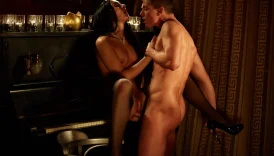Unlocking Creativity: How Sequencing Shapes Innovation and Problem-Solving
- Unlocking Creativity: How Sequencing Shapes Innovation and Problem-Solving
- 1. Introduction: From Basic Sequencing to Creative Innovation
- Bridging foundational concepts with creative processes
- Enhancing innovative thinking through understanding sequence
- Evolution from simple order to complex creative structures
- 2. The Cognitive Foundations of Sequencing in Creativity
- Pattern recognition and mental simulation
- Memory and associative thinking
- 3. Sequencing as a Catalyst for Creative Problem-Solving
- Case studies: From puzzle-solving to scientific discovery
- Techniques to train flexible and inventive sequencing approaches
- 4. The Role of Temporal and Structural Sequencing in Creative Processes
- Structuring creative workflows
- Dynamic sequencing: adapting in real-time
- 5. Visual and Artistic Sequencing: Enhancing Creativity through Sensory Patterns
- How sensory patterns influence perception
- Storytelling through artistic practices
- Impact on emotional and aesthetic responses
- 6. Sequencing in Collaborative Creativity and Innovation
- Managing different creative sequences
- Tools and methods for synchronization
- 7. Non-Linear and Emergent Sequencing: Unlocking New Creative Paradigms
- Examples from innovation fields
- Fostering breakthrough ideas through non-linearity
- 8. From Sequencing to Innovation: Practical Strategies for Creative Advancement
- Incorporating randomness and serendipity
- Evaluating and refining sequences
- 9. Returning to the Foundations: How Color, Memory, and Games Inform Creative Sequencing
- Lessons from games and memory exercises
- Integrating sensory cues for
1. Introduction: From Basic Sequencing to Creative Innovation
The concept of sequencing — arranging elements in a specific order — is fundamental not only to daily routines but also to the processes underlying creativity and innovation. As explored in Why Sequencing Matters: Insights from Color, Memory, and Games, understanding how sequences influence perception, memory, and decision-making provides a vital foundation for fostering creative thinking. Moving beyond simple chronological arrangements, creative processes leverage complex, layered sequences that stimulate neural activity, pattern recognition, and associative thinking, enabling breakthroughs across disciplines.
Bridging foundational concepts with creative processes
Foundationally, sequencing governs how information is structured and processed in the brain. When applied creatively, this structure transforms into a tool for generating novel ideas. For example, in music composition, arranging notes in unconventional sequences can produce entirely new auditory experiences, while in storytelling, narrative sequencing shapes emotional engagement and thematic resonance. Recognizing the shift from linear order to layered, dynamic sequences opens new pathways for innovation.
Enhancing innovative thinking through understanding sequence
Research indicates that individuals who consciously manipulate sequences—such as rearranging problem components or experimenting with different orderings—tend to develop more inventive solutions. For instance, in scientific research, sequencing experiments differently has led to unexpected discoveries. Similarly, in design thinking, iterating through various sequence options fosters a culture of experimentation and creative resilience.
Evolution from simple order to complex creative structures
Initially, simple sequences like step-by-step instructions serve basic functions. However, as cognitive and technological capabilities expand, so does the complexity of sequences involved in creative endeavors. Modern innovation often involves non-linear, emergent patterns—such as fractals in digital art or recursive algorithms in programming—that mimic natural complexity. This evolution underscores the importance of mastering layered sequencing to unlock higher-order creativity.
2. The Cognitive Foundations of Sequencing in Creativity
Understanding the neural basis of sequencing reveals how our brains support creative processes. Neural circuits in the prefrontal cortex coordinate working memory and planning, enabling us to simulate future scenarios based on current sequences. For example, mental rehearsal of a complex task involves creating a temporary sequence of actions, which can then be optimized or altered for better results.
| Neural Mechanism | Role in Creativity |
|---|---|
| Prefrontal Cortex | Supports planning, decision-making, and sequencing of complex ideas |
| Hippocampus | Facilitates memory retrieval and pattern recognition essential for associative thinking |
| Basal Ganglia | Involved in habitual and procedural sequencing, enabling fluid transitions between ideas |
Pattern recognition and mental simulation
Pattern recognition allows individuals to connect disparate ideas, forming new associations that drive innovation. For example, architects may recognize visual or structural patterns that inspire novel building designs. Mental simulation, on the other hand, enables creators to ‘preview’ sequences of actions or ideas internally, refining them before actual implementation, which is critical in fields like engineering or choreography.
Memory and associative thinking
Memory retrieval, especially from diverse experiences, fuels associative thinking—linking unrelated concepts into innovative solutions. For instance, many breakthroughs in science and art emerge from recalling seemingly disconnected memories and weaving them into new narratives or hypotheses. This process underscores the importance of rich, varied experiences in cultivating creative sequencing skills.
3. Sequencing as a Catalyst for Creative Problem-Solving
Identifying the correct sequence within complex problems often reveals solutions that are not immediately apparent. This approach is evident in puzzle-solving, where recognizing the order of steps leads to efficient solutions, and in scientific discovery, where sequencing experiments systematically uncovers underlying principles. The key lies in perceiving the problem’s structure and experimenting with different sequences to find innovative pathways.
Case studies: From puzzle-solving to scientific discovery
- The classic Rubik’s Cube challenge, where understanding sequence patterns accelerates solving time.
- Alexander Fleming’s discovery of penicillin, which resulted from recognizing the sequence of bacterial growth inhibition by mold.
- The development of the periodic table, where atomic sequencing revealed elemental relationships.
Techniques to train flexible and inventive sequencing approaches
- Practicing reverse engineering—analyzing solutions by deconstructing sequences.
- Using mind-mapping to visualize different possible sequences around a central idea.
- Engaging in improvisational activities, such as jazz or role-play, to enhance spontaneous sequencing skills.
4. The Role of Temporal and Structural Sequencing in Creative Processes
Timing and order are crucial in transforming raw ideas into refined creations. In creative workflows, understanding when to introduce, develop, and finalize concepts ensures coherence and impact. For example, in product design, initial brainstorming must be followed by prototyping, testing, and iteration—each phase requiring precise sequencing.
Structuring creative workflows
A typical creative process involves stages such as inspiration, ideation, development, refinement, and execution. Structuring these stages with clear sequences helps maintain momentum and clarity. Tools like Gantt charts or Kanban boards visually organize tasks in the proper order, facilitating better collaboration and efficiency.
Dynamic sequencing: adapting in real-time
Creative environments often demand flexibility. For instance, during a brainstorming session, shifting the sequence of idea presentation can spark new insights. Employing agile methodologies or iterative cycles allows teams to adapt sequences based on feedback, fostering innovation even in unpredictable situations.
5. Visual and Artistic Sequencing: Enhancing Creativity through Sensory Patterns
Visual arts heavily rely on the deliberate arrangement of elements such as color, form, and spatial order. These sequences influence viewers’ perceptions and emotional responses. For example, color gradients can evoke mood shifts, while sequential layering in collage art guides narrative flow.
How sensory patterns influence perception
Artists manipulate visual sequences—like arranging contrasting colors or sequential shapes—to create focal points and guide viewers’ eye movement. The use of visual rhythm, repetition, and variation enhances aesthetic appeal and emotional engagement. Understanding these principles allows creators to craft compelling stories through visual sequences.
Storytelling through artistic practices
Sequential storytelling techniques—such as comic strips or film editing—leverage the order of images or scenes to build suspense, humor, or empathy. The deliberate pacing of visual sequences shapes narrative meaning and emotional impact, demonstrating how sequencing is central to effective communication in art.
Impact on emotional and aesthetic responses
Studies show that sequences of visual stimuli can evoke specific emotional reactions, such as calmness or excitement. Artists and designers use this knowledge to craft experiences that resonate deeply, highlighting the power of sensory sequencing in fostering aesthetic appreciation and emotional connection.
6. Sequencing in Collaborative Creativity and Innovation
Successful team-based projects depend on shared understanding of sequences—whether in brainstorming, design iterations, or project management. Synchronizing individual creative sequences ensures coherence and synergy, which is vital for innovation. For example, agile teams often use sprint planning to align activities in a sequence that maximizes productivity and creative output.
Managing different creative sequences
Diverse team members may have varying approaches to sequencing based on their expertise or perspective. Facilitating open communication and employing tools like shared digital boards or sequence mapping helps align these approaches, fostering a unified creative direction.
Tools and methods for synchronization
- Collaborative platforms like Miro or Trello for visual sequence mapping
- Regular stand-up meetings to adjust sequences based on progress
- Use of version control and iterative reviews to refine shared sequences
7. Non-Linear and Emergent Sequencing: Unlocking New Creative Paradigms
Moving beyond linear sequences, embracing chaos and complexity allows for breakthroughs that linear models cannot achieve. Non-linear sequencing, such as recursive algorithms or fractal patterns, fosters emergent properties—unexpected, innovative behaviors that emerge from complex interactions. This approach has revolutionized fields like artificial intelligence, where neural networks learn through layered, non-linear processes.
Examples from innovation fields
- The development of deep learning algorithms that simulate emergent intelligence
- Generative art systems that evolve based on non-linear rules
- Scientific models of complex systems, such as climate simulations, that depend on layered, iterative sequences
Fostering breakthrough ideas through non-linearity
Encouraging experimentation with chaotic or recursive sequences can lead to novel solutions. For example, artists experimenting with fractal designs or writers using nonlinear storytelling techniques—like in “House of Leaves”—demonstrate how embracing complexity can push creative boundaries.
8. From Sequencing to Innovation: Practical Strategies for Creative Advancement
Developing personalized routines that incorporate diverse sequencing methods enhances creative output. Techniques such as random prompt generation, cross-disciplinary exploration, and deliberate disruption of habitual sequences foster adaptability and originality. Regularly reviewing and refining these routines ensures continuous growth and innovation.
Incorporating randomness and serendipity
Introducing unpredictable elements—like using dice to select ideas or exploring unrelated fields—can break mental blocks and inspire novel connections. Studies in creativity show that serendipitous encounters significantly boost innovative outcomes.
Evaluating and refining sequences
Using feedback loops, reflective journaling, and performance metrics helps creators assess the effectiveness of their sequences. Iterative refinement aligns routines with evolving goals and environmental changes, sustaining a cycle of continuous innovation.
9. Returning to the Foundations: How Color, Memory, and Games Inform Creative Sequencing
Revisiting insights from Why Sequencing Matters: Insights from Color, Memory, and Games deepens our understanding of how sensory cues and play influence the structuring of innovative sequences. Color theory demonstrates how specific hues and arrangements evoke emotional states, guiding creative expression. Memory exercises, such as mnemonic games, enhance the ability to mentally organize and retrieve complex sequences, vital for problem-solving and artistic endeavors.
Lessons from games and memory exercises
Games like Tetris or pattern-matching puzzles train players to recognize and manipulate sequences under time constraints, sharpening cognitive agility. Incorporating playful elements into creative routines fosters a flexible mindset, essential for adapting sequences dynamically and fostering breakthrough ideas.

